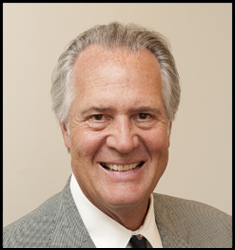Massachusetts General Hospital

Harry E. Rubash, M.D.
Edith M. Ashley Professor of Orthopaedic Surgery
Harvard Medical School
2012-13 Chief's Report
The Bioengineering Laboratory
The Bioengineering Laboratory, under the direction of Guoan Li, Ph.D., has entered its 13th year and is a leader in the field of musculoskele¬tal engineering and biomechanics. The Laboratory contin¬ues to make significant contributions to several subspecialty areas including arthroplasty, spine biomechanics, and sports medicine.
The Laboratory has a fabulous team of outstanding graduate students, postdoctoral fellows and research staff. This year, we are proud to celebrate Hemanth Gadikota’s receipt of his PhD degree from VU University Amsterdam. Congratulations, Dr. Gadikota! In collaboration with Dr. Warner, Mr. Massimini continues to conduct research on dynamic in vivo shoulder biomechanics and is planning to receive his PhD degree from MIT this fall. We also welcomed the return of our former summer intern, Mr. Sean Driscoll, who joins the staff as a research bioengineer to manage the project of in vivo cervical spine biomechanics before and after surgical treatment.
Dr. Hosseini, in collaboration with our Center of Sports Medicine, Dr. Alan Grodzinsky of MIT and Dr. Martin Torriani of the Radiology Department, is carrying out a quantitative validation study using T2/T1rho mapping MRI imaging to develop a non-invasive biomarker to detect early-stage cartilage degeneration. Dr. Shaobai Wang, in collaboration with Drs. Kirkham Wood, Thomas Cha, Frederick Mansfield and Brian Grottkau, is actively investigating in vivo lumbar disc loading using combined DFIS and 3D finite element simulation. Dr. Tsung-Yuan Tsai is actively concentrating on in vivo hip kinematics using fluoroscopic imaging systems in collaboration with Drs. Young-Min Kwon, Henrik Malchau, Harry Rubash and Guoan Li. The hip research team celebrated two journal publications, which rigorously validated the application of the DFIS technique for measuring in vivo six-degrees-of-freedom kinematics of the native hip and total hip replacements during various physiological activities. Dr. Li and his team continued their research on high flexion of the knee and investigated the varied functional roles of different portions of the collateral ligaments along the flexion path of the knee.
Mr. Jing-Sheng Li, the lab’s core bioengineer, will join the PhD program at Boston University’s Health Science Department. Under the supervision of Dr. Li and Dr. David Felson of BU Medical Center, he will conduct his thesis research on the prevention of OA in overweight patients. Mr. Li and orthopaedic residents have completed the study that identified an optimal muscle suturing technique to repair muscle lacerations. Dr. Hosseini and Mr. Gadikota have been conducting a series of biomechanical tests of various posterolateral structure reconstruction techniques using the robotic testing system. They have also completed a study on the effect of biceps tendon loading on medial compartment cartilage contact forces of the knee.
There have also been several new additions to the Laboratory. Dr. Park came from Yonsei University Hospital in Seoul, Korea to investigate the MCL/LCL biomechanics after total knee arthroplasty. Dr. Wu, an attending spine surgeon from Changchun, China, joined the spine research team to help Drs. Wood and Cha in their study of dynamic spinal motion after fusion surgeries. Dr. Liu from Shanghai and Dr. CB Li from Beijing, China joined the Laboratory to examine ACL impingement issues and the indications to ACL reconstruction and bi-cruciate retaining TKAs.
The Bioengineering Laboratory reported the first in vivo 6DOF kinematics of total hip replacement during dynamic gait. This project is aimed at revealing the mechanisms of implant impingement and improving the longevity of the prosthesis.
This year, the Laboratory added a new research direction. With Drs. Li, Kwon and Malchau, the lab published two articles about a series of validation studies using advanced imaging techniques to determine in vivo hip articular motion. These validation studies demonstrated the capability to accurately measure 6DOF femoral head motion with respect to the pelvis in both native hips and total hip arthroplasty during dynamic functional activities such as gait. With this exciting technique, we have secured several research grants to investigate the efficacy of surgical treatments of FAI and improvement of edge loading in THA.
Furthermore, at this year’s ORS/AAOS meetings the team presented over 20 abstracts, as well as podium presentations. They pub¬lished 28 in prestigious peer-reviewed journals in the areas of arthroplasty, spine, sports medicine, and biomechanics. In addition, the team continued to secure several competitive grants from the NIH and other foundations to study the biomechanical intricacies of hip/knee arthroplasty, spine pathology, and ACL reconstruction. It has been another fabulous year!
- MGH Chief's Report
- Introduction
- Accountable Care
- Care Redesign
- Innovation
- New Faculty
- Mark Price, MD
- Center for MoM THR
- Retreat
- Children's book
- Courses
- Subspecialties
- Adult Reconstructive
- Hand & Upper Extremity
- Foot & Ankle
- Oncology
- Podiatry
- Shoulder
- Sports
- Spine
- Trauma
- Research Labs
- Sarcoma & Mol Bio
- MSK Engineering
- Bioengineering
- MSK Gen & Regen Bio
- Shoulder Biomotion
- Harris
- Ab & Immunotherapy
- Tech Implementation
